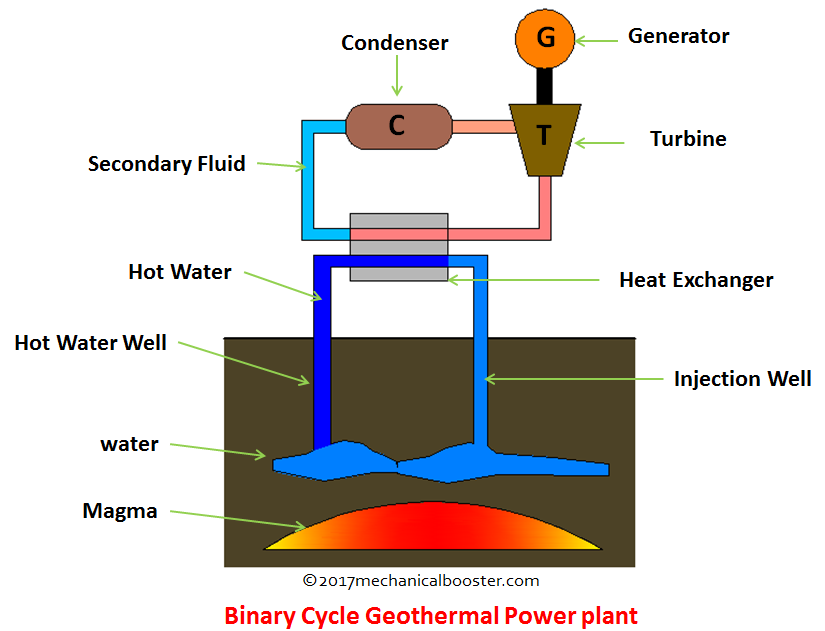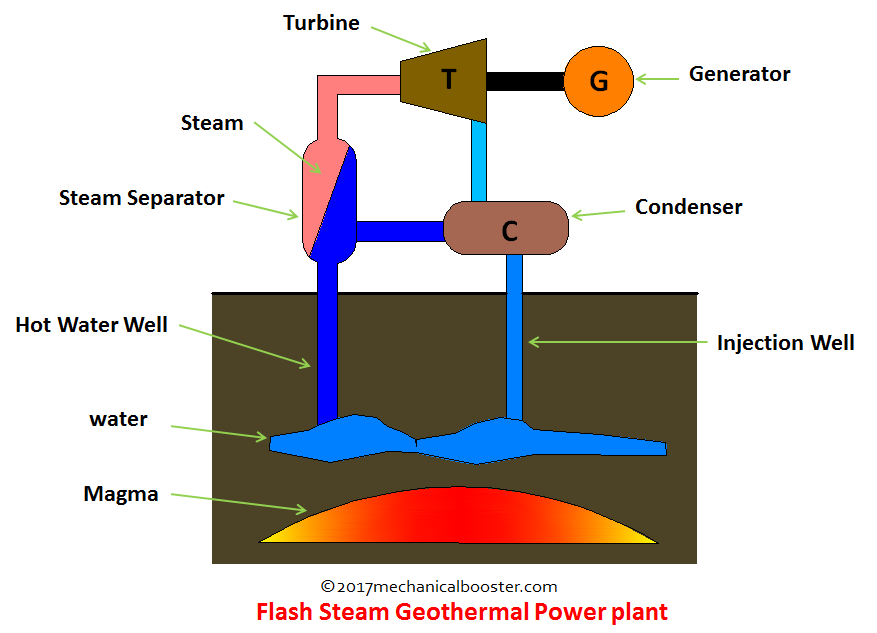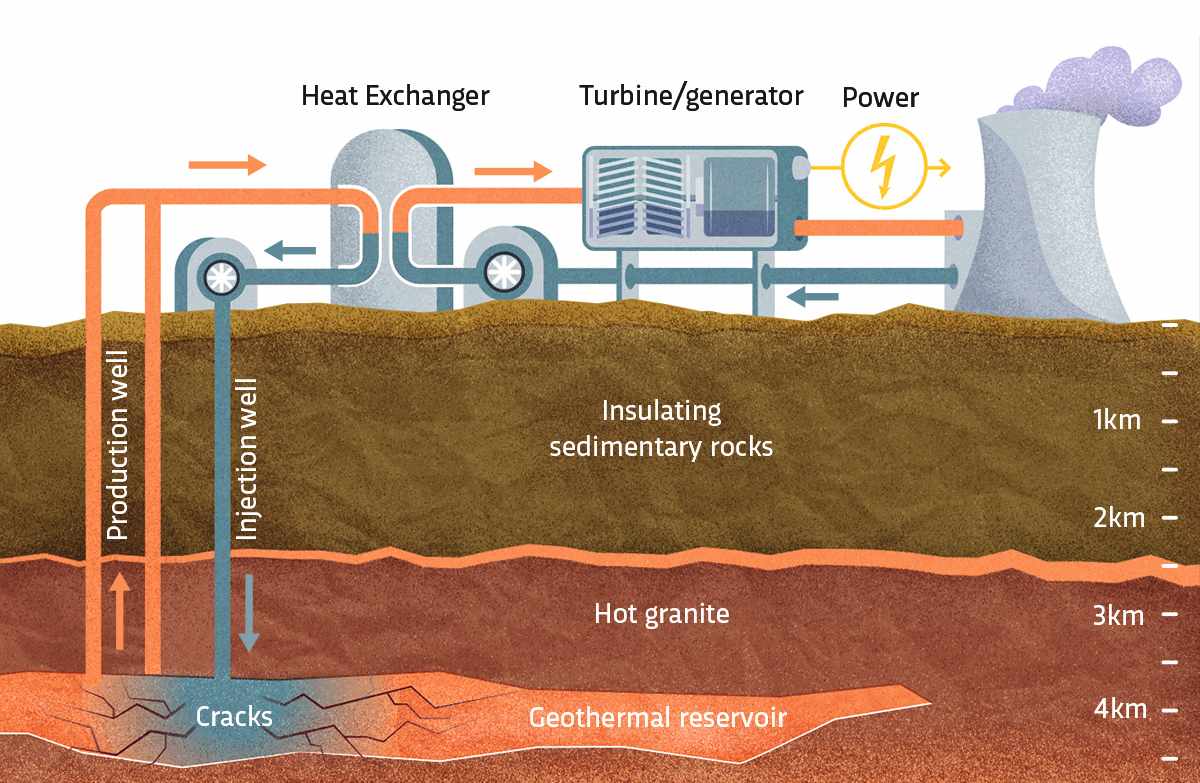
What is being taken from the earth is continuously given back right after heat exchange process.
Here is a simplified overview of the steps involved in creating geothermal energy:
- Identifying geothermal resources: Engineers begin by identifying areas where there is significant geothermal heat, typically by studying geological maps, geophysical surveys, and other data sources.
- Drilling wells: Once a suitable site has been identified, engineers drill deep wells into the ground to access the hot water or steam that is stored beneath the Earth’s surface. The depth of the wells can vary depending on the temperature and pressure of the geothermal reservoir, but can range from a few hundred feet to several miles deep.
- Pumping fluids: Once the wells are drilled, engineers use pumps to extract the hot water or steam from the geothermal reservoir and bring it to the surface. The fluid is typically a mixture of water and dissolved minerals, and can be under high pressure and temperature.
- Power generation: The hot water or steam is then used to power turbines and generate electricity. In some cases, the fluid is first used to heat a working fluid, such as a refrigerant, which then drives a turbine to produce electricity. In other cases, the steam is used directly to power the turbines.
- Reinjecting fluids: After the geothermal fluid has been used to generate electricity, it is usually reinjected back into the geothermal reservoir to maintain the pressure and temperature of the system. This helps to ensure the long-term sustainability of the geothermal resource.
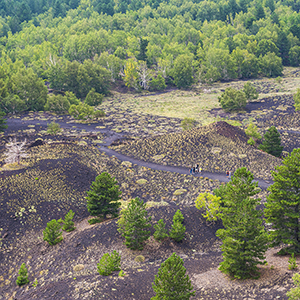
Preliminary survey
An investigation of the geothermal area is conducted based on a nationwide or regional study.

Surface exploration
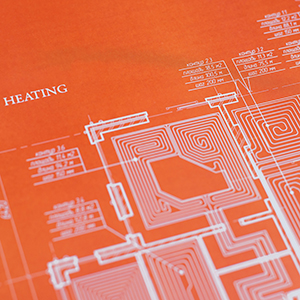
Project review and planning

Field development
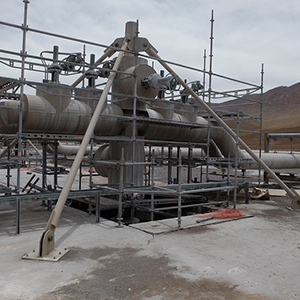
Power plant construction and production drilling
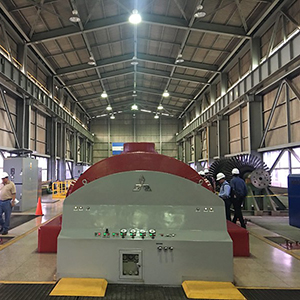
Commissioning

Operation and maintenance
How Is Geothermal Energy Formed?
Geothermal energy is actually a thermal energy generated and stored in the Earth continuously.
As you penetrate the Earth’s surface in a straight line, deeper you go, the warmer it will get towards to the inner core and temperature will reach 5,200° Celsius at the end.
The heat from the core is constantly radiating outward and warming rocks, water, gas, and other geological material. When rocks are heated at 700 – 1.300°C temperatures, they become a hot molten called magma.
When magma heats the surrounding area, it releases hot water which you can observe as a geyser or hot springs (HOT WATER).
These are the sources of geothermal energy.
When you capture the hot air or water, by using the steam, you can turn it into electricity. Because the hot water or steam is then returned to the ground where it can be used again, geothermal energy is considered renewable.
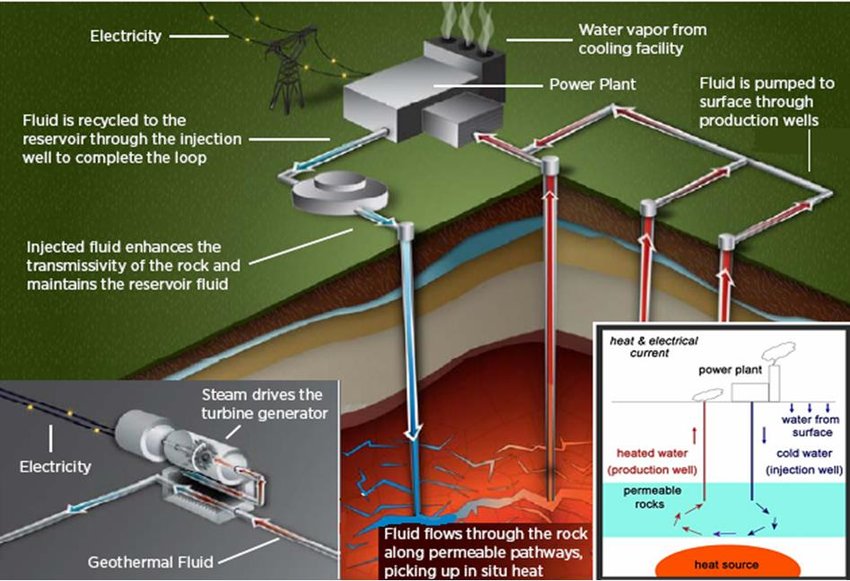
Low carbon energy families:
Geothermal has some of the most potential with the fewest drawbacks.
Solar panels are capable of generating power with zero emissions. The generated power can be used to feed your energy demand, perfectly replacing conventional energy needs with green energy. Every kilowatt of green energy can reduce your carbon footprint by 3,000 pounds annually.
Wind energy is a viable alternative of fossil fuels. It does not emit CO2 or other air pollutants. It runs virtually carbon free for its lifetime.
Reinjection
helps to maintain the pressure level in the reservoir. Another important benefit of reinjection is by continuous flushing of the rock matrix by the cooled water, the recoverable energy from the reservoir substantially increases.
Geothermal power
plants largely release only excess steam, with most plants discharging no air or liquid. This makes geothermal power plants a clean source of electricity and an important contributor to the nation's zero-carbon future.
Geothermal energy
is considered one of the most efficient and sustainable types of energy because it's a clean, reliable, and renewable resource. It uses the heat inside the earth's surface to generate electricity and provide heating and cooling.
Geothermal sources
are a renewable energy and will never deplete. Abundant geothermal energy will be available for as long as the Earth exists. It is a renewable energy source from the heat generated by the earth's internal core and is available 7/24/365.


